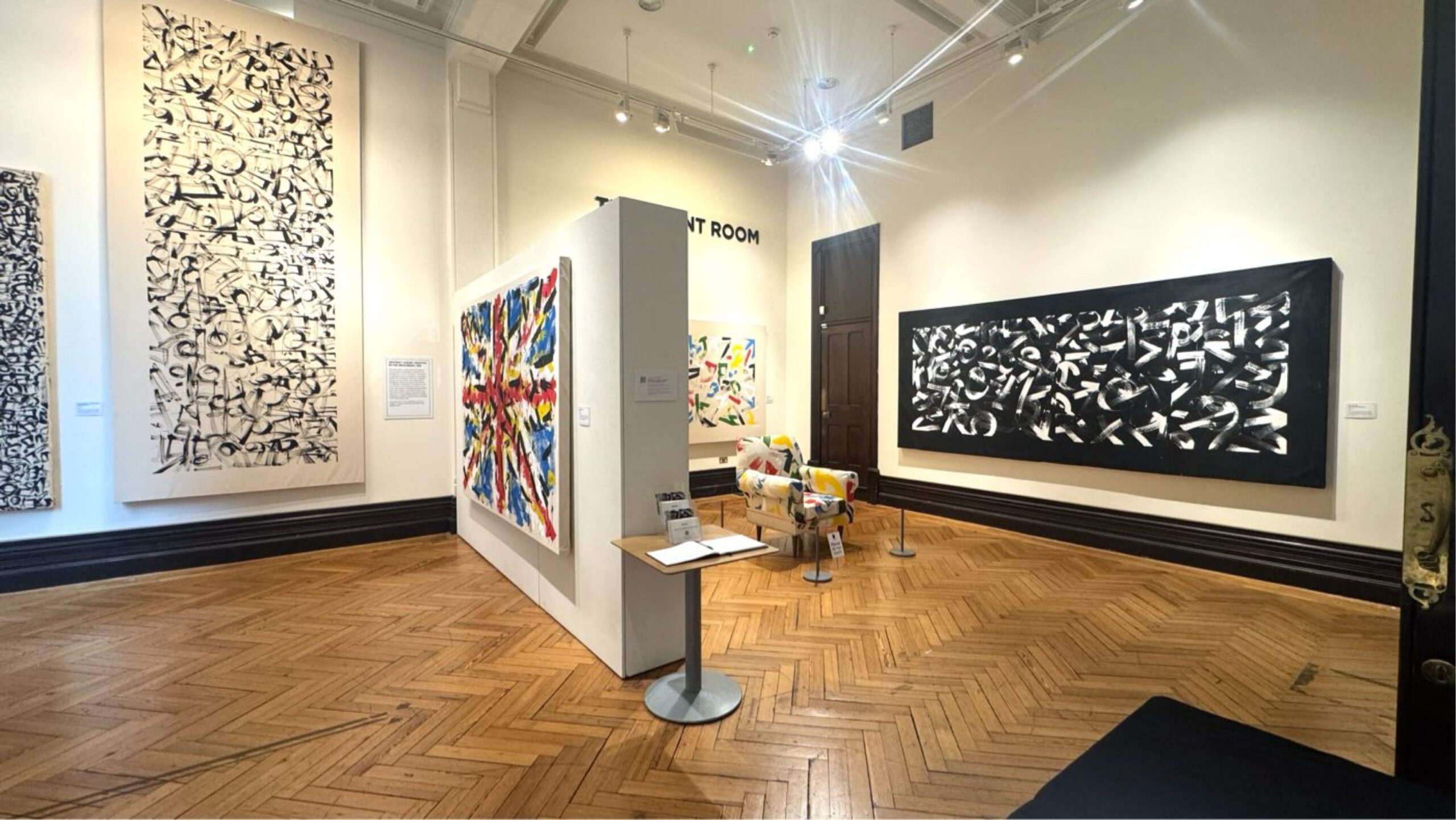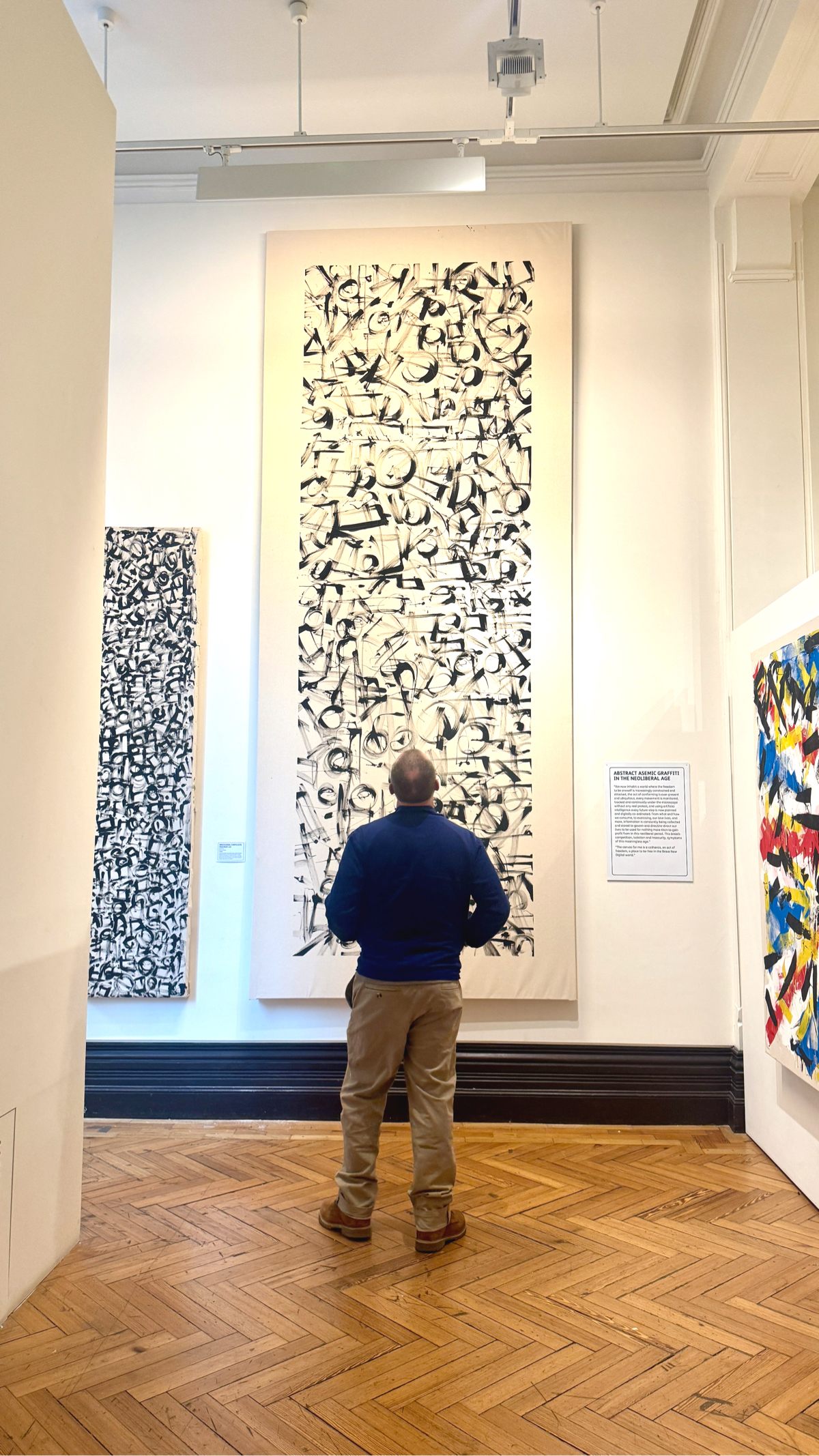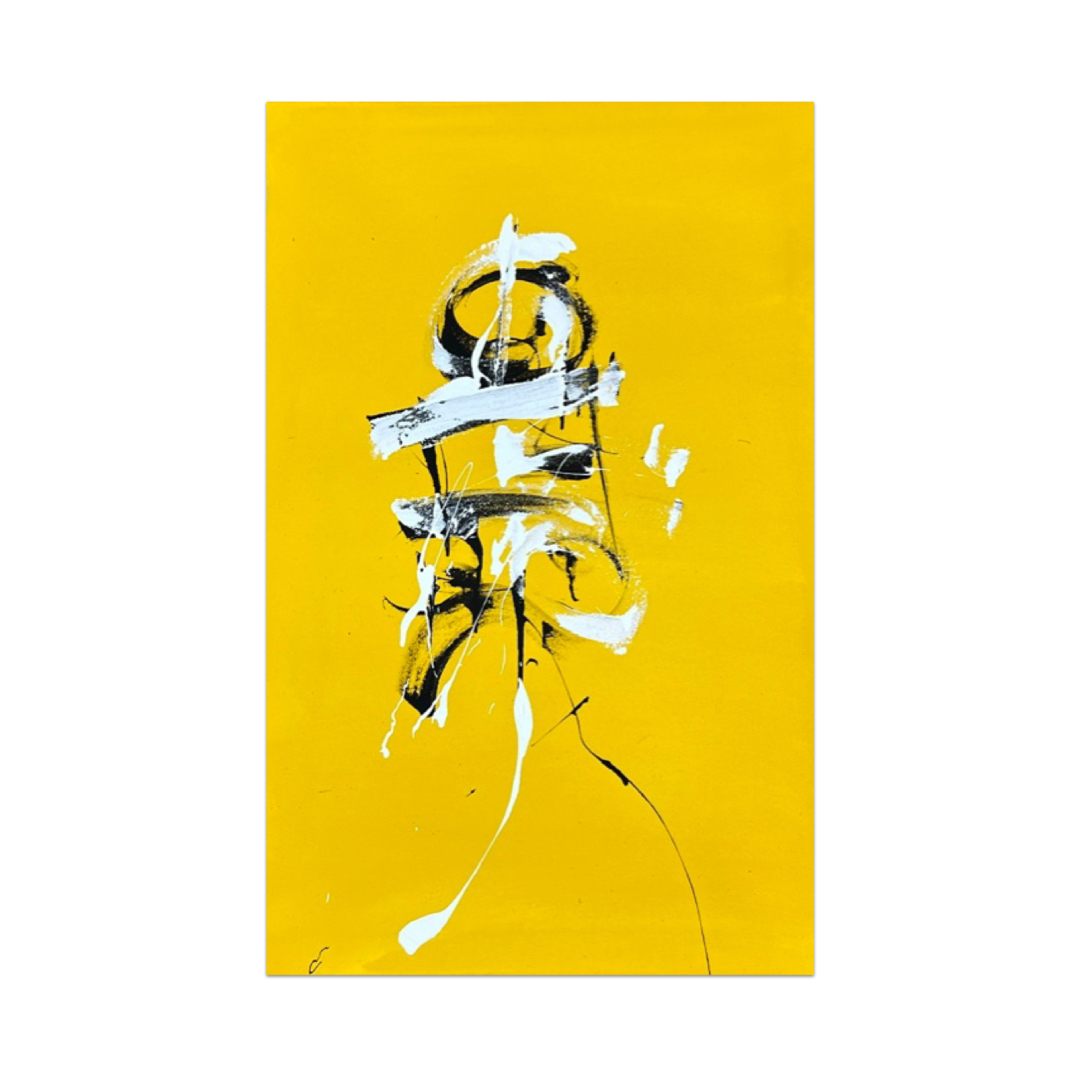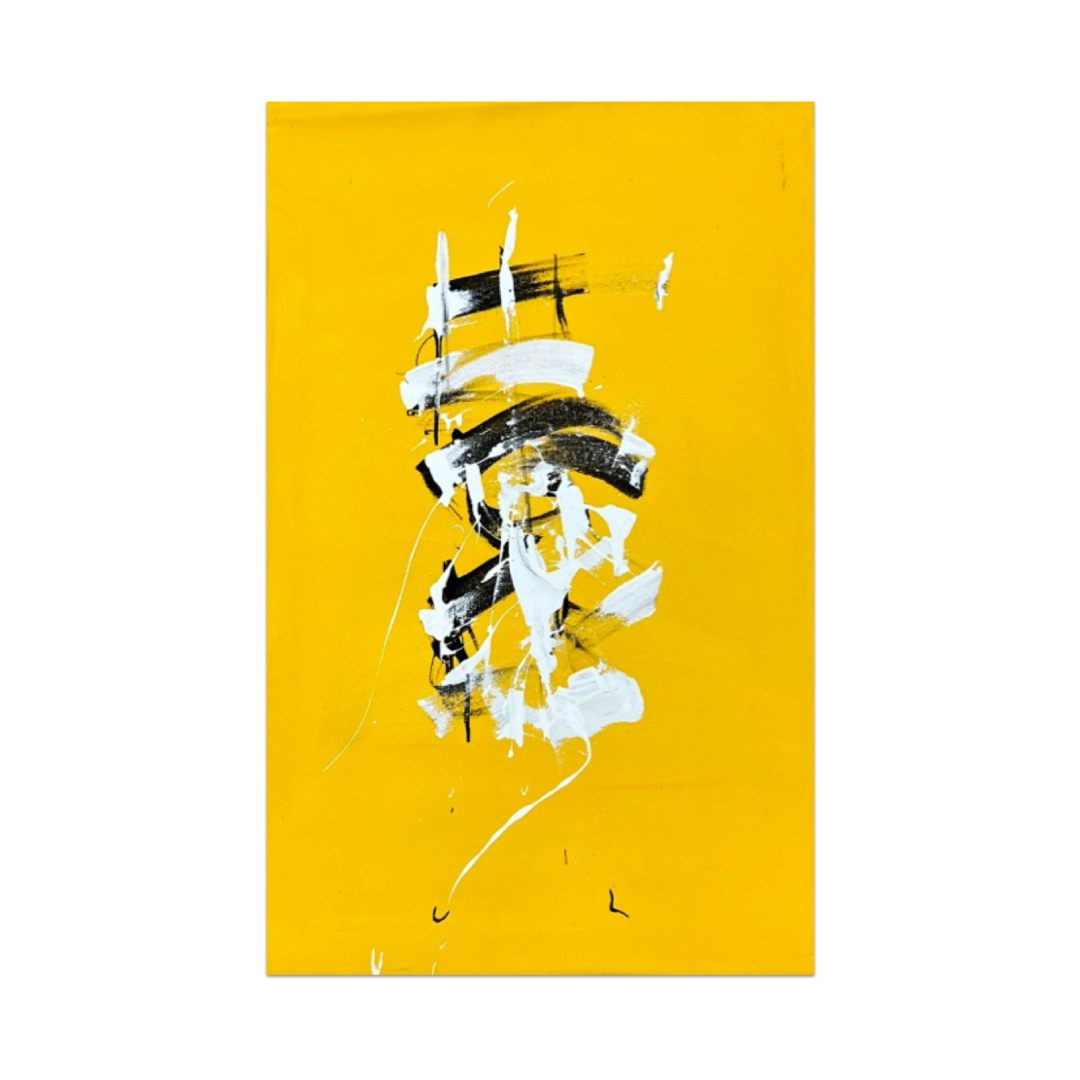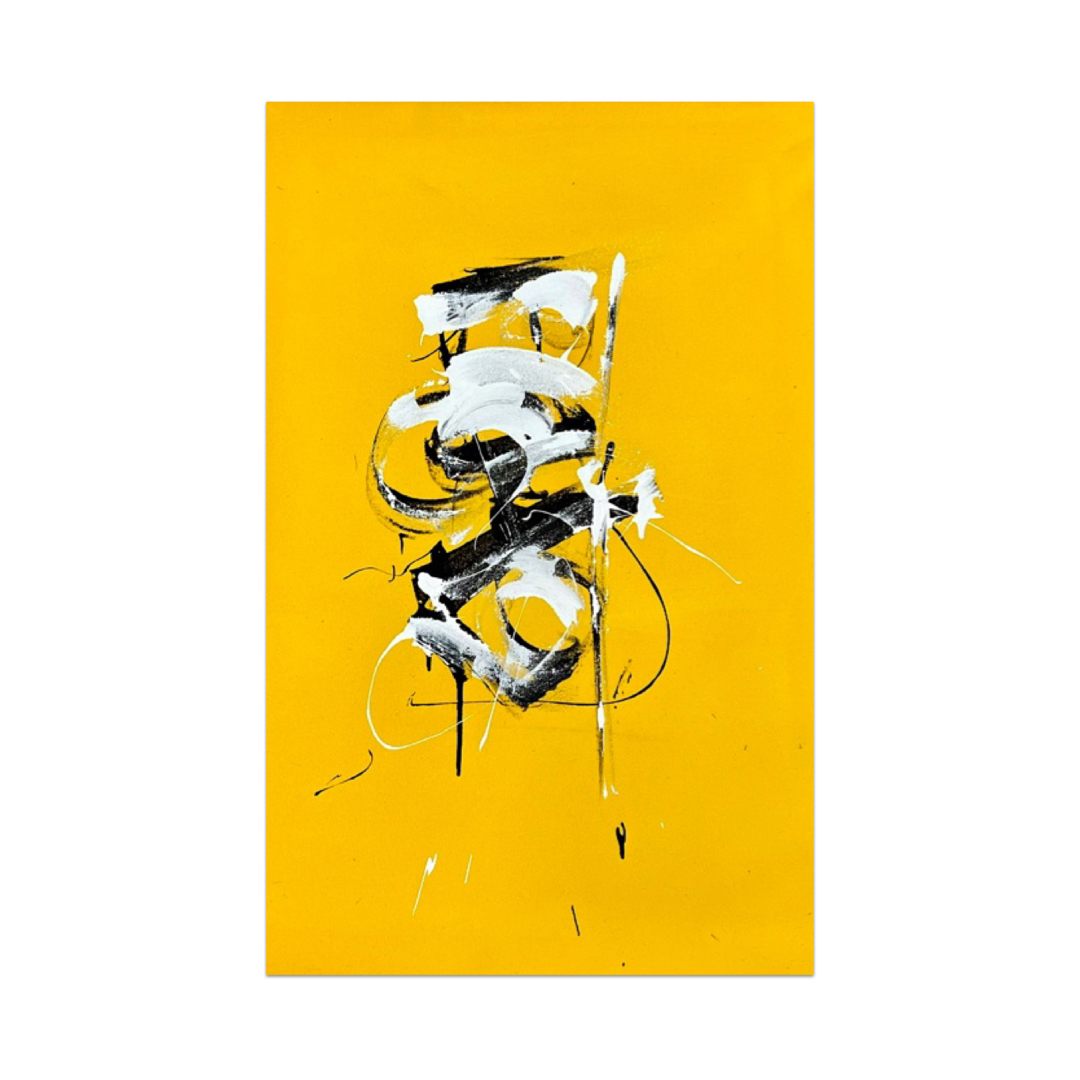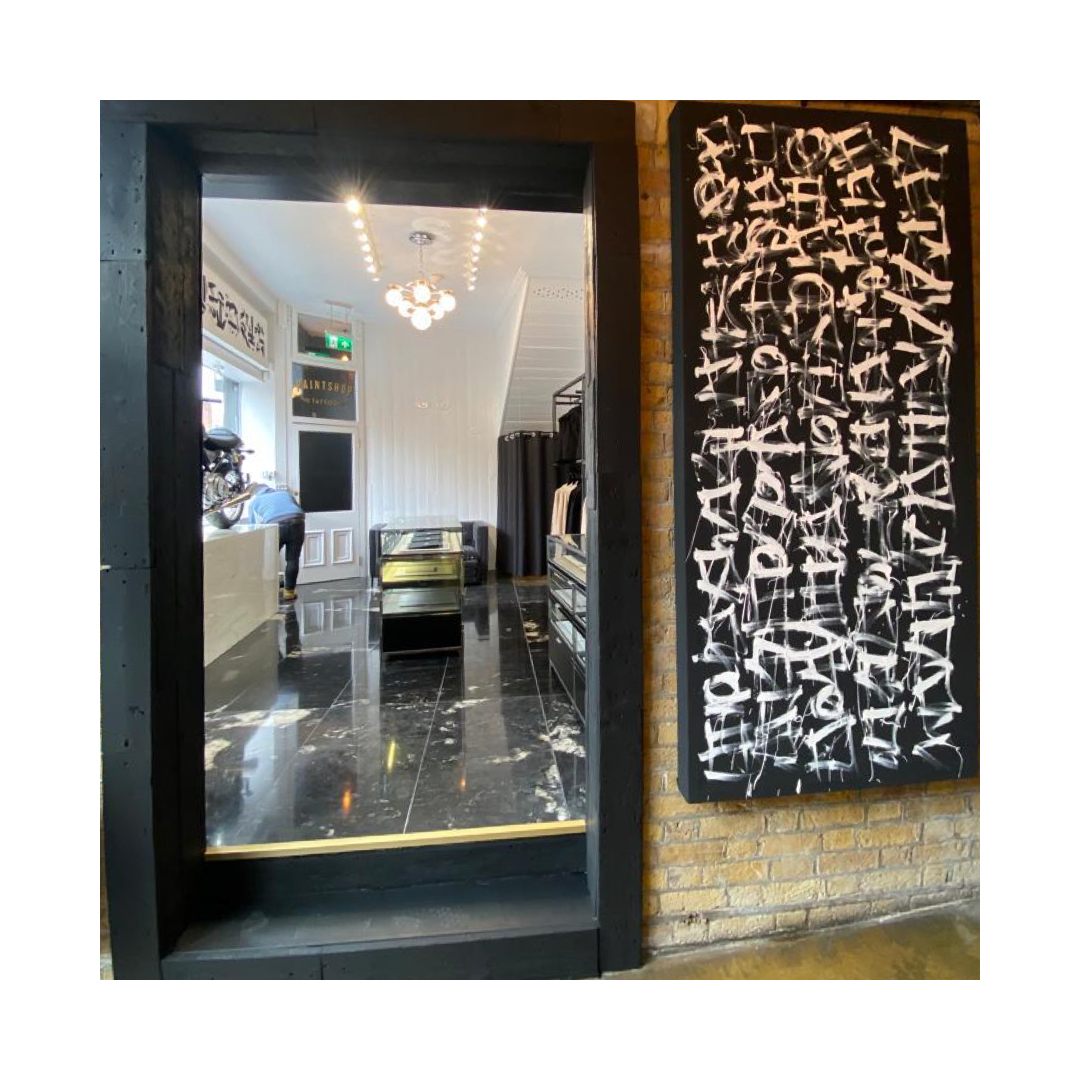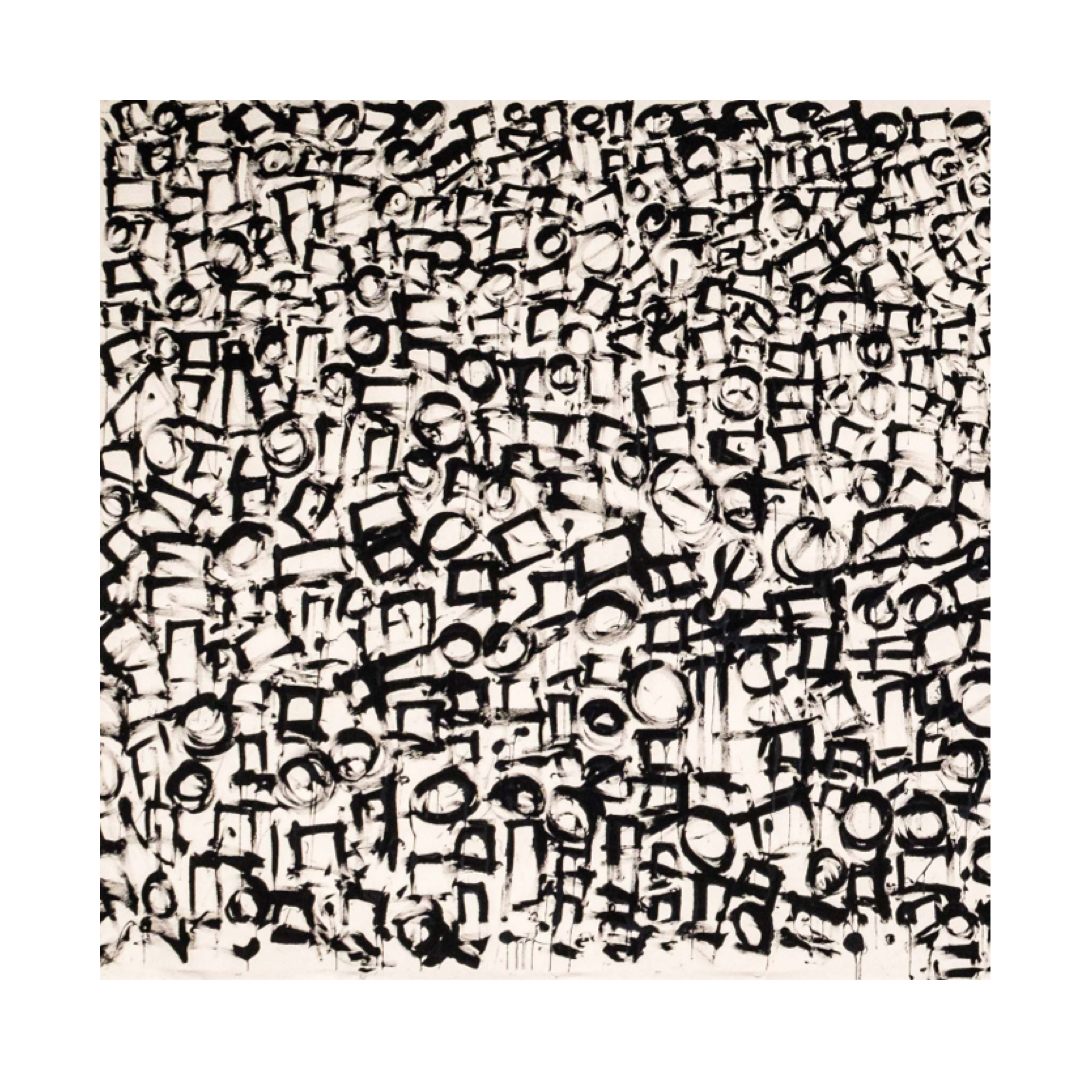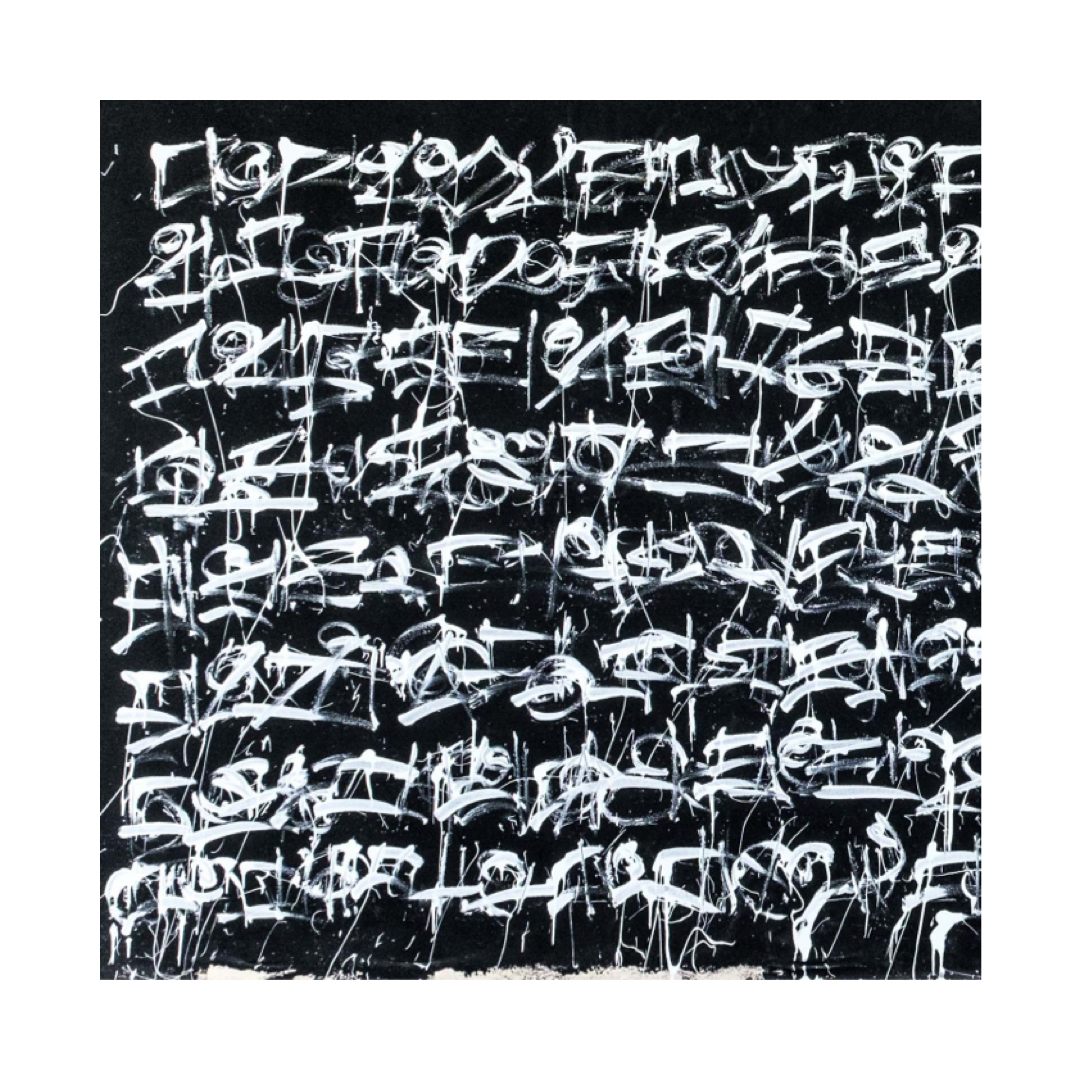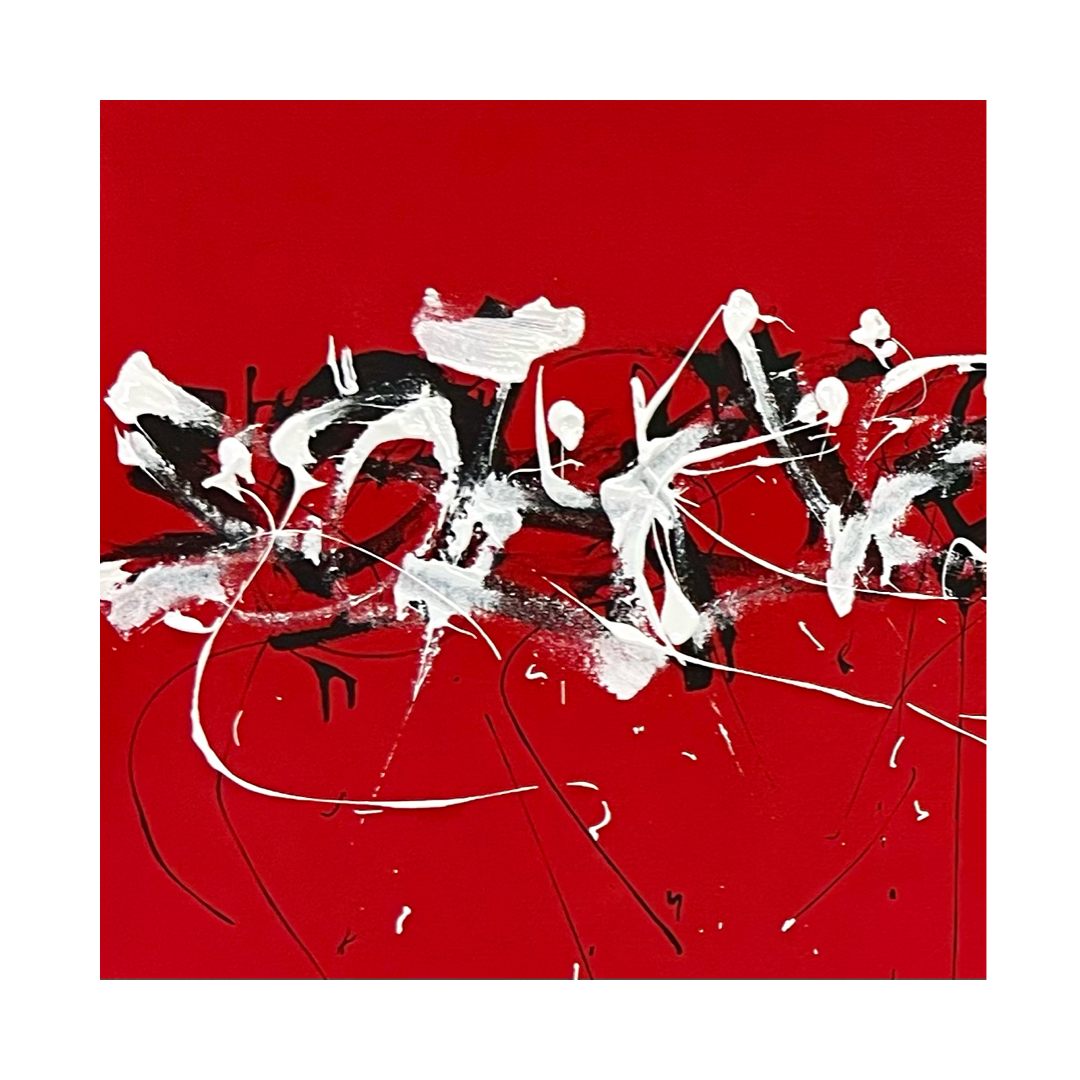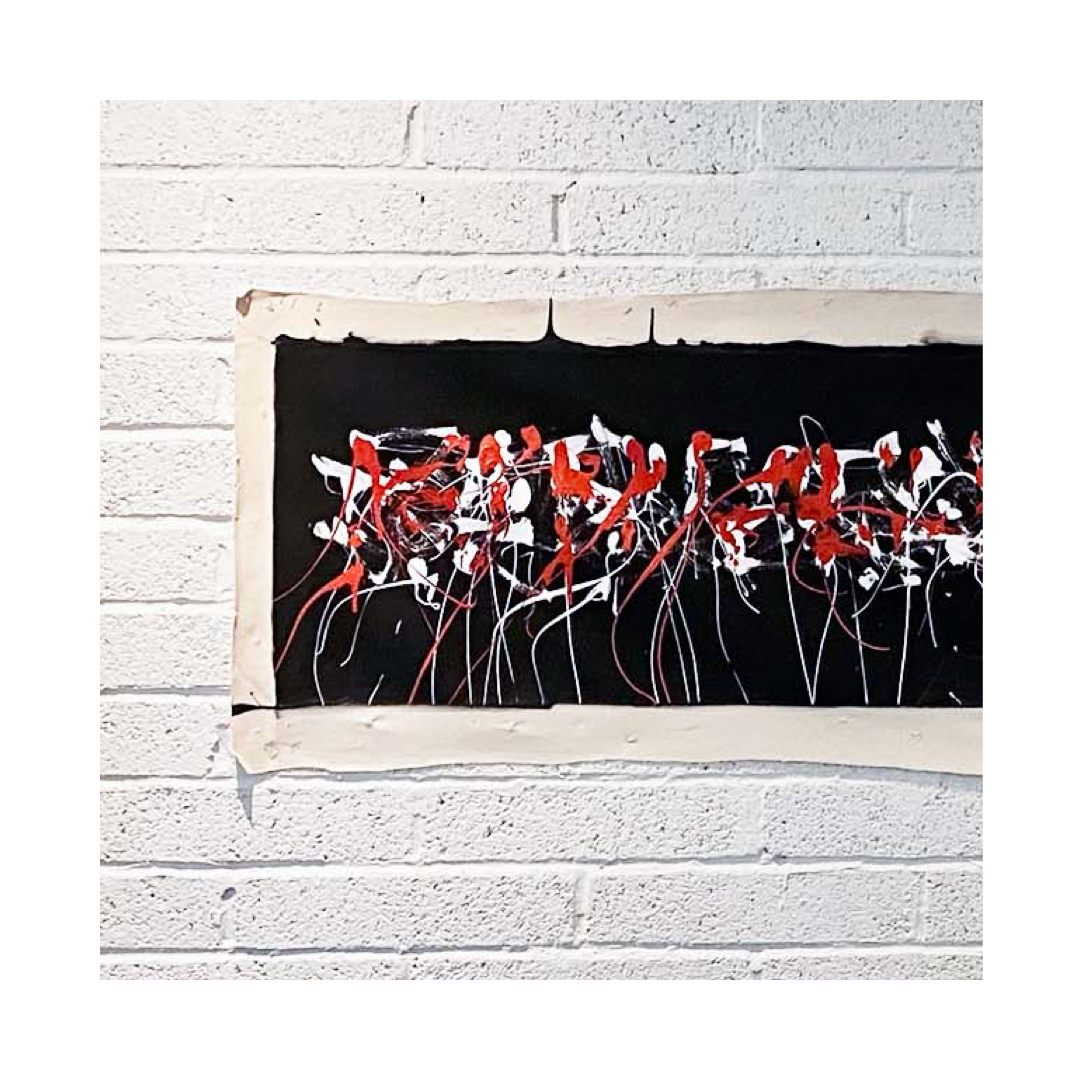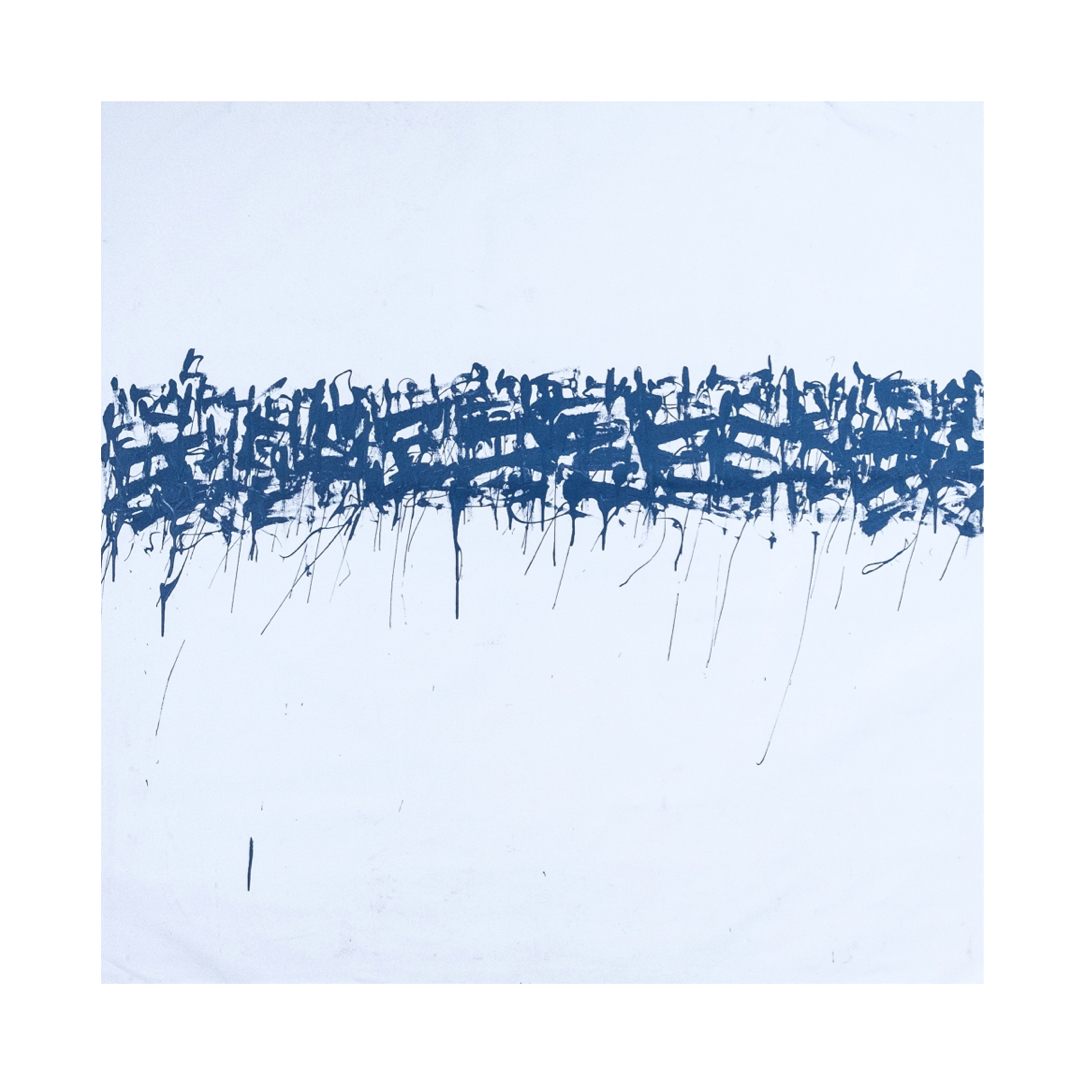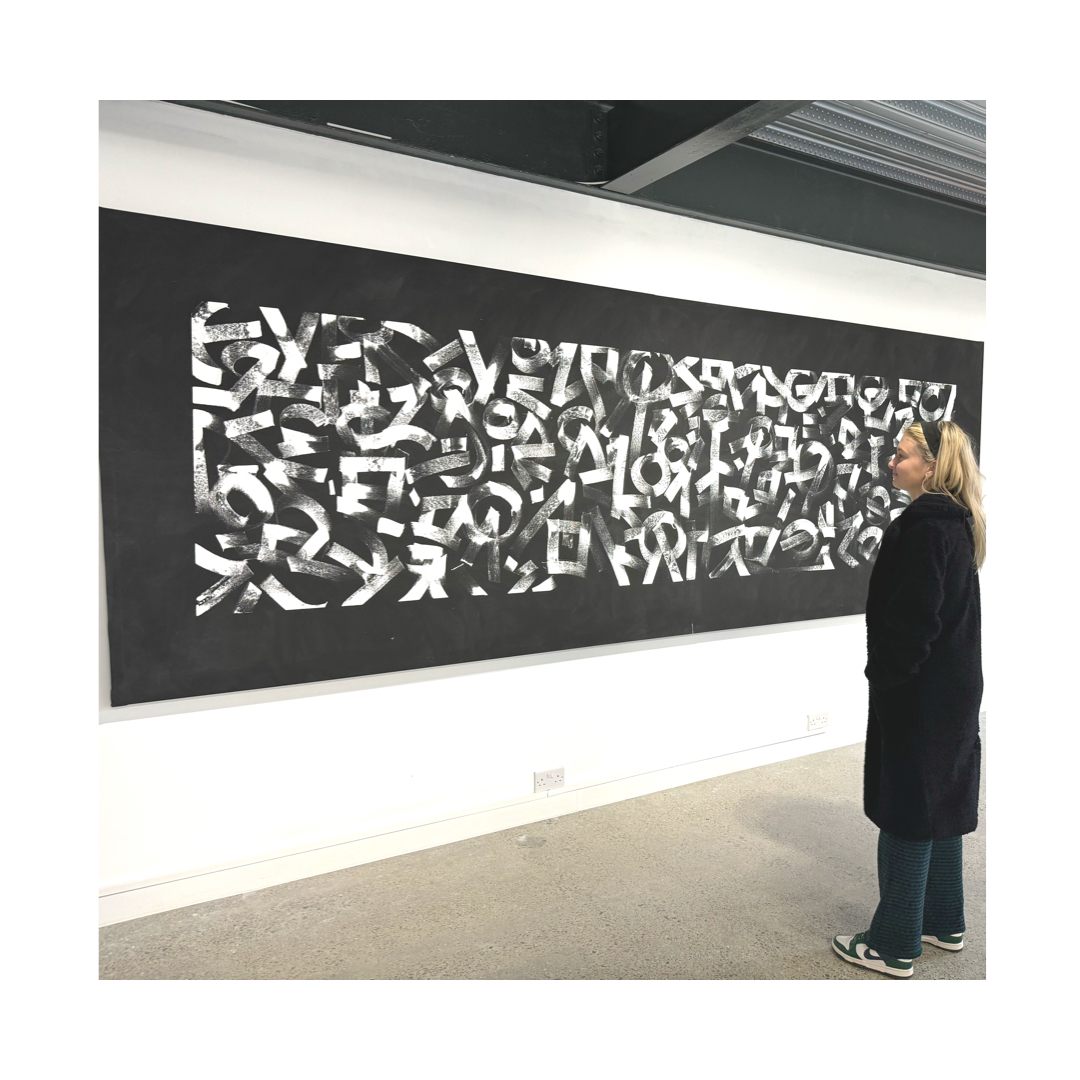Who is Kai Motta?
Motta is a London born self-taught studio artist currently based on the south coast of England. Initially inspired by graffiti, street art and hip hop he later became obsessed with Abstract Expressionism. He now exploits both mediums to produce his graffiti-esque abstract asemic artwork. Asemic art is a form of visual art that uses marks, symbols, or “writing-like” gestures that have no specific semantic meaning.
Motta uses American Expressionism and graffiti as primary sources of inspiration
The paint is applied with uncleaned brushes where the paint has dried in order to achieve a hard calligraphic edge. The paintings are produced to look like they are saying something, with the brushstrokes implying the meaning rather than a definitive set of letters, building on the rich history of asemic art/writing.
“The pieces themselves I feel are symphonic and filled with rhythm, energy and cadence as the indelible strokes bounce and tear, sometimes gently, other times chaotically across the canvas, much like the movement of different pieces of music.”

